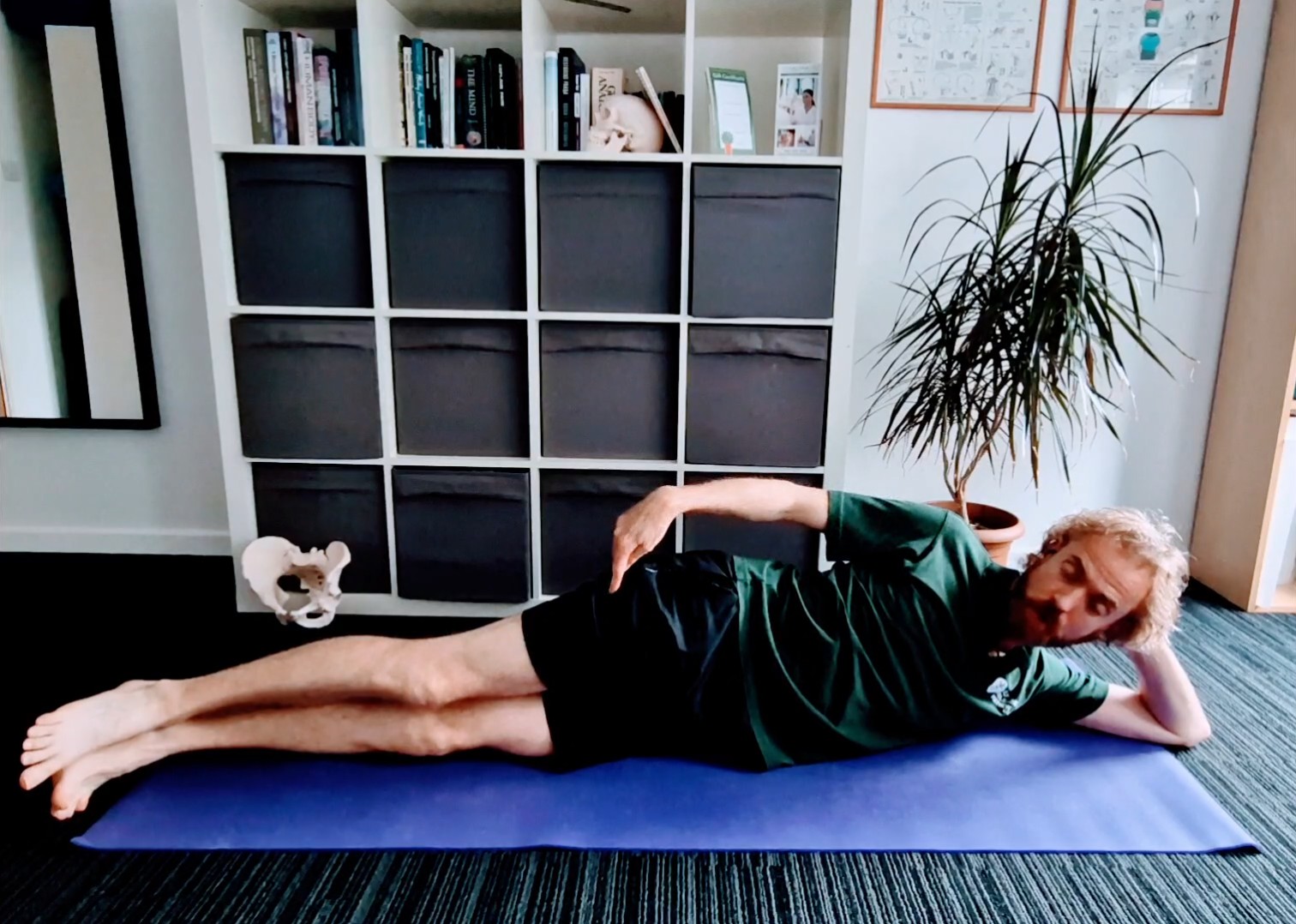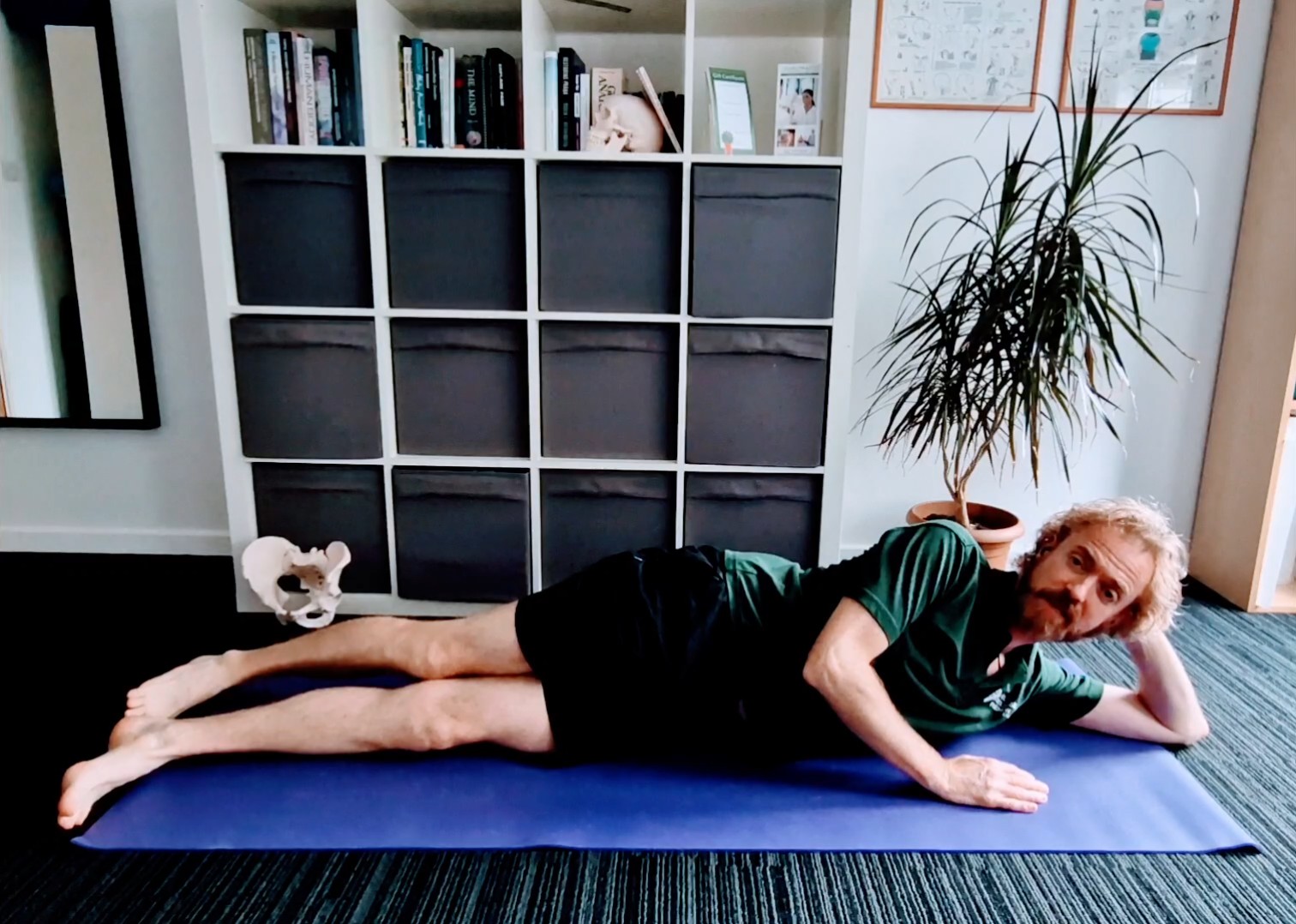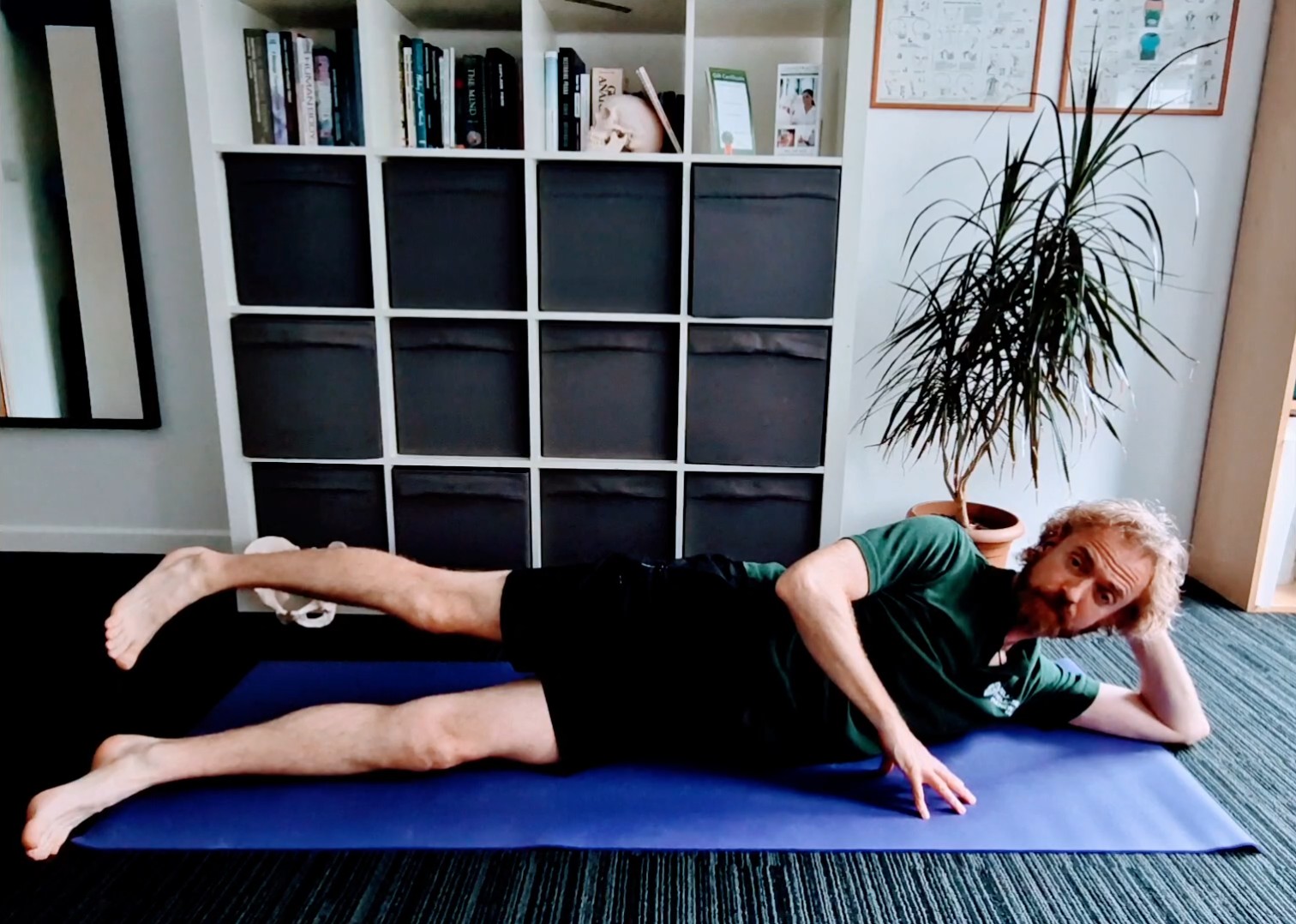This is a variation of the Classic Clamshell and this is meant to help focus the effort into one of the deeper hip stabiliser muscles. This is that is the Gluteus Minimus muscle.
This muscle runs vertically from from the boney point of the Greater Trochanter (which most people will point to when talking about their hip) to the side of the pelvis and helps to stop you falling over when you stand on one leg or wobbling too much when you’re walking. It can sometimes become reliant on other more surface muscles (e.g. TFL and Gluteus Medius) to achieve the movements and it is not recruited quite as efficiently.
Some will say that this exercise is not functional, but if you have issues getting an awareness of this muscle this can really help you focus (in which case I would argue it is functional).
There is a video at the bottom of this page taking your through the stretches, after the steps and photos.
Equipment
Yoga mat if you are lying on the floor, or a bed.
A pillow can be helpful to support the head.
Steps
- Lie on your side, with your legs straight.
- Make sure you’re lying directly on your side (rather than rolling the pelvis forwards or backwards)
- If you have a deep curve (lordosis) in your low back, see if you can reduce that a little bit by flattening the low back.
- You might find it easier to balance if the feet are flexed, as if you’re standing on something.
- Once you’re balanced on your side, you take the top leg back slightly, so the toes of that foot are just behind the heel of the underneath leg. You are putting slight extension in the hip. I refer to this as “Walking like an egyptian.”
- Make sure you haven’t rolled backwards on the pelvis, the movemetn should just be in the hip and leg.
- Keeping the top leg in this slight extension, lift the leg towards the ceiling. Moving slowly and with care.
- Make sure the leg does not drift forwards when you’re doing this movment and that the leg is moving sideways (rather than the toes pointing upwards)
- Take the leg as high as you can comfortably go.
- Slowly and carefully lower the leg back down to the ground.
- Repeat this movement (steps 4-7) five to ten times
- Roll over and repeat on the other side.



Steps – More advanced
When you’re finding the basic movement easy then progress to this slightly more advanced movement that helps with more control.
- Lie on your side, with your legs straight.
- Make sure you’re lying directly on your side (rather than rolling the pelvis forwards or backwards)
- If you have a deep curve (lordosis) in your low back, see if you can reduce that a little bit by flattening the low back.
- You might find it easier to balance if the feet are flexed, as if you’re standing on something.
- Once you’re balanced on your side, you take the top leg back slightly, so the toes of that foot are just behind the heel of the underneath leg. You are putting slight extension in the hip. I refer to this as “Walking like an egyptian.”
- Make sure you haven’t rolled backwards on the pelvis, the movemetn should just be in the hip and leg.
- Keeping the top leg in this slight extension, lift the leg towards the ceiling. Moving slowly and with care.
- Make sure the leg does not drift forwards when you’re doing this movment and that the leg is moving sideways (rather than the toes pointing upwards)
- Take the leg in line with the top of the pelvis.
- Keeping the leg at this height, and also with the slight extension, rotate the leg at the hip so the toes point towards the ceiling.
- Still keeping the leg at this height and extension, rotated the leg at the hip so the toes point down towards the ground.
- Return to the “neutral” position with the leg up and slightly extended at the hip, lower it down to the ground if you need a break or repeat.
- Slowly and carefully lower the leg back down to the ground.
- Repeat this movement (steps 4-10) five to ten times
- Roll over and repeat on the other side.






Video
Here’s a short video of me doing the movement on the ground.
Thanks for reading this my lovely Interonauts.
Tim


